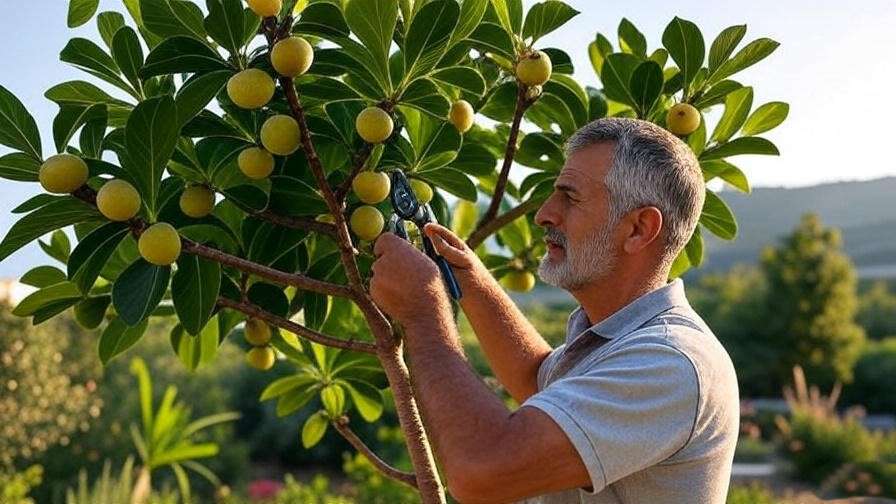Imagine stepping into your backyard to pluck sweet, honey-like figs from your very own Kadota fig tree, bursting with flavor and ready to enjoy fresh or preserved! 🍈 The Kadota fig tree, known for its delicious yellowish-green fruits, is a gardener’s dream for creating a Mediterranean-inspired oasis. Whether you’re a beginner or a seasoned grower, this comprehensive guide will empower you to cultivate a thriving Kadota fig tree with expert-backed care tips. From planting to harvesting, we’ll cover everything you need to ensure abundant yields and a healthy tree. Backed by horticultural expertise and proven practices, this article is your ultimate resource for mastering Kadota fig care. Let’s dig in! 🌱
1. Understanding the Kadota Fig Tree 🌿
1.1 What Makes the Kadota Fig Tree Special?
The Kadota fig tree (Ficus carica ‘Kadota’) is a standout variety prized for its medium-sized, yellowish-green figs with sweet, amber-colored flesh. Unlike darker fig varieties like Black Mission, Kadota figs offer a milder, honey-like flavor, making them perfect for fresh eating, drying, or canning. Historically, this variety powered the commercial fig industry, with Kadota figs being the go-to choice for products like “Fig Newtons.” Its versatility and productivity make it a favorite among home gardeners and commercial growers alike.
Kadota figs are self-pollinating, meaning you don’t need multiple trees for fruit production. The tree itself is moderately sized, typically reaching 10–20 feet tall, with attractive, broad leaves that add ornamental value to any garden.
1.2 Ideal Growing Zones and Climate
Kadota fig trees thrive in USDA Hardiness Zones 7–10, where warm, sunny conditions mimic their Mediterranean origins. They require at least 6–8 hours of direct sunlight daily and prefer temperatures between 60–85°F. While they tolerate heat well, frost can damage young trees or buds, so protection is key in cooler regions.
For gardeners in colder zones (5–6), growing Kadota figs in containers allows you to move them indoors during winter. With proper care, these trees adapt to various climates, making them accessible to a wide range of growers.
Expert Insight: Dr. Louise Ferguson, a fruit tree specialist at UC Davis, notes, “Kadota figs excel in Mediterranean-like climates due to their heat tolerance and low chill requirements, making them ideal for warm, sunny gardens.”
2. Planting Your Kadota Fig Tree 🌱
2.1 Choosing the Right Location
Selecting the perfect spot is critical for your Kadota fig tree’s success. Aim for a location with full sun exposure—6–8 hours of direct sunlight daily—to maximize fruit production. The soil should be well-draining, loamy, and slightly acidic to neutral (pH 6.0–6.5). Avoid low-lying areas where water pools, as Kadota figs are prone to root rot in soggy conditions.
If planting multiple trees, space them 15–20 feet apart to ensure adequate airflow and room for growth. For container-grown trees, ensure the pot is placed in a sunny, sheltered spot, such as a south-facing patio.
2.2 Selecting a Healthy Kadota Fig Tree
When purchasing a Kadota fig tree, opt for a reputable nursery to ensure quality. Look for a tree with:
- A strong, straight stem without cracks or damage.
- Healthy, vibrant leaves with no wilting or yellowing.
- A robust root system (for bare-root or potted trees).
Bare-root trees are cost-effective and easier to plant, while potted trees offer a head start for growth. Inspect for signs of pests or disease, such as sticky residue or discolored leaves, before buying.
2.3 Step-by-Step Planting Guide
The best time to plant a Kadota fig tree is early spring or late fall, when temperatures are mild, and the tree can establish roots before extreme weather. Follow these steps:
- Prepare the Site: Dig a hole twice as wide and as deep as the root ball. Amend the soil with compost or well-rotted manure to boost fertility.
- Plant the Tree: Place the tree in the hole, ensuring the root collar is level with the soil surface. Backfill with soil, tamping gently to remove air pockets.
- Water Thoroughly: Soak the soil to settle the roots, then add a 2–3-inch layer of organic mulch (e.g., wood chips or straw) to retain moisture and regulate temperature.
- Stake if Needed: For young trees in windy areas, use a stake to provide stability for the first year.
Pro Tip: Apply a layer of mulch around the base, keeping it 2 inches away from the trunk to prevent rot.
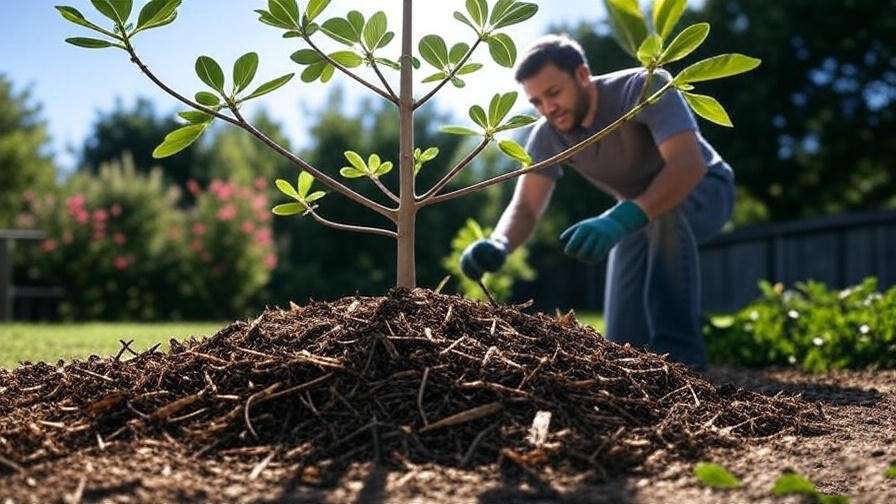
3. Essential Care for a Thriving Kadota Fig Tree 🧑🌾
3.1 Watering Needs
Proper watering is key to a healthy Kadota fig tree. Young trees need regular watering—about 1–2 inches per week—while established trees are more drought-tolerant. Water deeply but infrequently to encourage deep root growth. In hot, dry climates, increase watering during summer, ensuring the soil stays moist but not waterlogged.
Check for signs of overwatering (yellowing leaves, soggy soil) or underwatering (wilting leaves, dry soil). Use a moisture meter or dig a few inches into the soil to assess moisture levels.
3.2 Fertilizing for Optimal Growth
Kadota fig trees benefit from balanced fertilization to support growth and fruit production. Apply a balanced fertilizer (e.g., 10-10-10 NPK) or organic compost in early spring and mid-summer. For a 1-year-old tree, use 1 pound of fertilizer; increase by 1 pound per year of age, up to 5 pounds for mature trees.
Avoid over-fertilizing, which can lead to excessive leaf growth at the expense of fruit. Test your soil annually to ensure nutrient levels are optimal.
3.3 Soil and Mulch Maintenance
Maintain healthy soil by testing its pH and nutrient content yearly. If the pH is too high or low, amend with sulfur or lime as needed. Reapply mulch annually to suppress weeds, retain moisture, and protect roots from temperature extremes. Organic mulches like bark or compost also enrich the soil as they decompose.
Case Study: Jane, a Zone 8 gardener, transformed her Kadota fig tree’s health by adding a 3-inch layer of compost mulch annually. “It reduced watering needs and kept weeds at bay, leading to a bumper crop of figs,” she shared.
4. Pruning and Training Your Kadota Fig Tree ✂️
4.1 Why Pruning Is Essential
Pruning is vital for Kadota fig trees to boost fruit production, improve air circulation, and maintain a manageable size. Regular pruning prevents overcrowding, reduces disease risk, and ensures sunlight reaches all parts of the tree. The best time to prune is late winter or early spring, before new growth begins.
4.2 Pruning Techniques for Kadota Figs
Follow these steps for effective pruning:
- Remove Dead or Damaged Wood: Use clean, sharp pruning shears to cut away any dead, broken, or diseased branches.
- Thin Crowded Areas: Remove crossing or inward-growing branches to open up the canopy.
- Shape the Tree: Aim for an open-center structure to maximize sunlight exposure and airflow.
- Limit Height: For easier harvesting, keep the tree at 10–12 feet by trimming top growth.
Sterilize tools with rubbing alcohol between cuts to prevent disease spread.
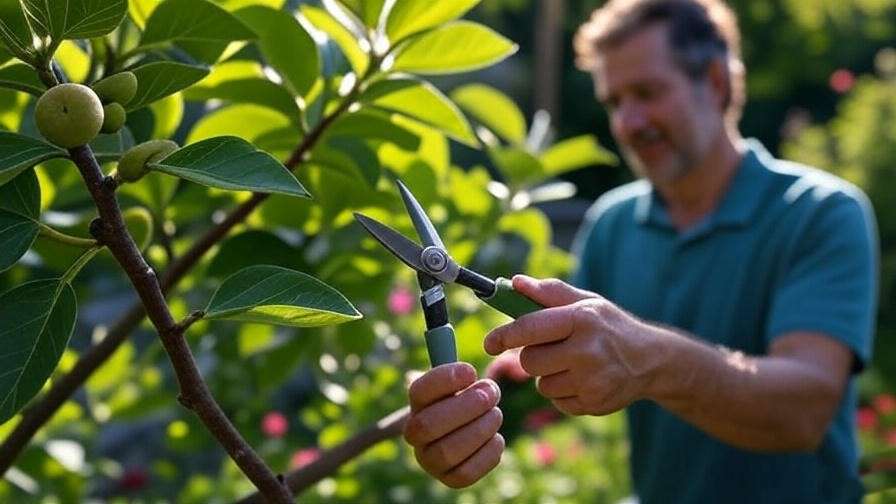
4.3 Training Young Trees
Young Kadota fig trees benefit from training to establish a strong structure. Choose between:
- Open-Center Training: Encourages a vase-like shape, ideal for sunlight penetration.
- Central-Leader Training: Promotes a single, upright trunk, suitable for smaller spaces.
For container-grown trees, prune annually to maintain a compact shape. Pinch back new growth to encourage bushier foliage.
Expert Tip: Make cuts at a 45-degree angle just above a bud to promote healing and reduce disease risk.
5. Managing Pests and Diseases 🐞
5.1 Common Pests Affecting Kadota Fig Trees
Kadota fig trees, while resilient, can attract pests that impact fruit quality and tree health. Common culprits include:
- Fig Beetles: These shiny green beetles feed on ripe figs, causing damage. Control them by picking fruit early in the morning and using traps with sweet bait.
- Aphids: These small sap-sucking insects cause leaf curling and stunted growth. Spray with insecticidal soap or introduce ladybugs, a natural predator.
- Scale Insects: These pests appear as small, immobile bumps on stems and leaves. Apply neem oil or horticultural oil to suffocate them.
Regularly inspect your tree for sticky residue, distorted leaves, or insect clusters. Early intervention is key to preventing infestations.
5.2 Diseases to Watch For
Kadota fig trees are susceptible to a few diseases, particularly in humid or poorly drained conditions:
- Root Rot: Caused by overwatering or poor drainage, this fungal disease leads to wilting and yellowing leaves. Prevent it by ensuring well-draining soil and avoiding waterlogged conditions. If detected, reduce watering and improve drainage.
- Leaf Spot: Fungal spots on leaves can reduce photosynthesis. Remove affected leaves and apply a copper-based fungicide.
- Rust: Orange pustules on leaves indicate rust. Improve air circulation through pruning and apply sulfur-based fungicides if needed.
Sanitation is critical: Remove fallen leaves and debris to minimize disease spread. Choose disease-resistant Kadota cultivars when possible.
FAQ Section: Why are my Kadota figs dropping prematurely? Premature fruit drop can result from water stress, nutrient deficiencies, or pest damage. Ensure consistent watering, fertilize appropriately, and inspect for pests like fig beetles.
6. Harvesting and Enjoying Kadota Figs 🍇
6.1 When and How to Harvest
Kadota figs are ready to harvest when they turn yellowish-green, feel soft to the touch, and slightly droop from the branch. In most regions, this occurs from late summer to early fall (July to September). Taste a fig to confirm ripeness—mature Kadota figs are sweet with a honey-like flavor.
To harvest:
- Gently twist the fig or use clean pruning shears to cut the stem, avoiding damage to the tree.
- Handle figs carefully to prevent bruising.
- Harvest early in the morning when temperatures are cooler to maintain fruit quality.
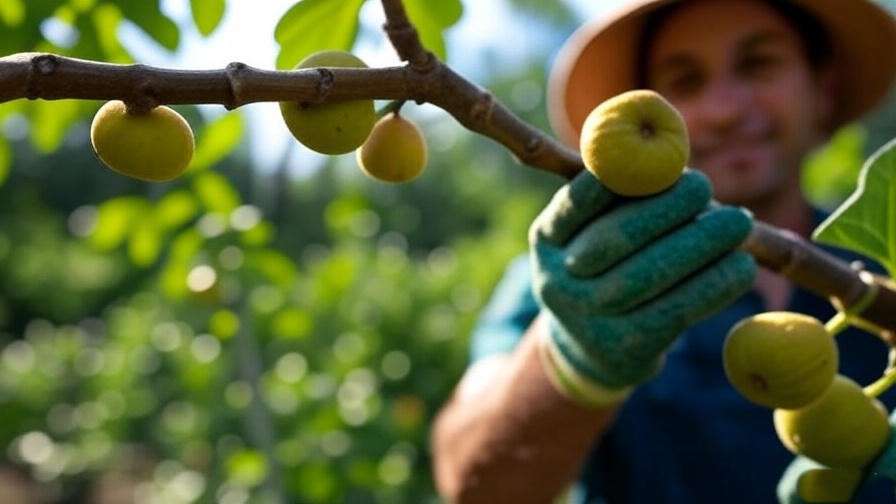
6.2 Storing and Using Kadota Figs
Fresh Kadota figs are best enjoyed immediately but can be stored in the refrigerator for up to a week. Place them in a single layer in a breathable container to prevent mold. For longer storage:
- Drying: Slice figs in half and dry them in a dehydrator or oven at 135°F for 12–24 hours. Store dried figs in an airtight container for up to 6 months.
- Canning: Make Kadota fig jam or preserves by simmering figs with sugar and lemon juice. Follow a tested canning recipe to ensure safety.
Recipe Idea: Try a Kadota fig and goat cheese salad. Combine fresh figs, arugula, goat cheese, walnuts, and a balsamic vinaigrette for a delicious, garden-fresh dish.
Reader Engagement: Share your favorite Kadota fig recipes in the comments below or tag us on social media with #KadotaFigHarvest!
7. Troubleshooting Common Kadota Fig Tree Problems ⚠️
7.1 Why Isn’t My Kadota Fig Tree Producing Fruit?
If your Kadota fig tree isn’t bearing fruit, consider these factors:
- Insufficient Sunlight: Ensure the tree receives 6–8 hours of direct sun daily. Relocate container trees or prune nearby plants blocking light.
- Improper Pruning: Over-pruning or pruning at the wrong time can reduce fruiting. Follow late winter pruning guidelines to preserve fruiting wood.
- Nutrient Imbalance: Excess nitrogen can lead to leafy growth instead of fruit. Use a balanced fertilizer and test soil nutrients.
- Young Tree: Kadota figs typically fruit within 2–3 years of planting. Be patient with younger trees.
Kadota figs are self-pollinating, so pollination issues are rare. If problems persist, consult a local extension service for tailored advice.
7.2 Addressing Leaf Drop and Yellowing
Leaf drop or yellowing can signal stress. Common causes and solutions include:
- Water Issues: Overwatering causes soggy soil and root rot, while underwatering leads to wilting. Check soil moisture and adjust watering accordingly.
- Pest Damage: Inspect for aphids or scale insects and treat with organic controls.
- Nutrient Deficiency: Yellow leaves may indicate a lack of nitrogen or magnesium. Apply a balanced fertilizer or Epsom salts for magnesium.
Visual Aid: Below is a troubleshooting table for quick reference:
| Symptom | Possible Cause | Solution |
| Yellowing leaves | Overwatering, nutrient deficiency | Adjust watering, apply balanced fertilizer |
| Leaf drop | Water stress, pests | Check soil moisture, inspect for pests |
| No fruit | Insufficient sun, over-pruning | Ensure full sun, prune in late winter |
8. Growing Kadota Figs in Containers 🪴
For gardeners in colder climates or with limited space, growing Kadota fig trees in containers is an excellent option. Containers allow mobility to protect trees from frost and fit small spaces like patios or balconies.
- Choosing a Pot: Select a container at least 15–20 gallons with drainage holes. Terracotta or plastic pots work well.
- Potting Mix: Use a high-quality mix with perlite or sand for drainage. Avoid heavy, clay-based soils.
- Care Adjustments:
- Water more frequently, as containers dry out faster.
- Fertilize monthly during the growing season with a diluted liquid fertilizer.
- Repot every 2–3 years to refresh soil and accommodate root growth.
- Winter Protection: Move containers to a garage or indoors during freezing temperatures, or wrap pots with insulating material.
Pro Tip: Place the pot on a wheeled caddy for easy movement, especially in regions with harsh winters.
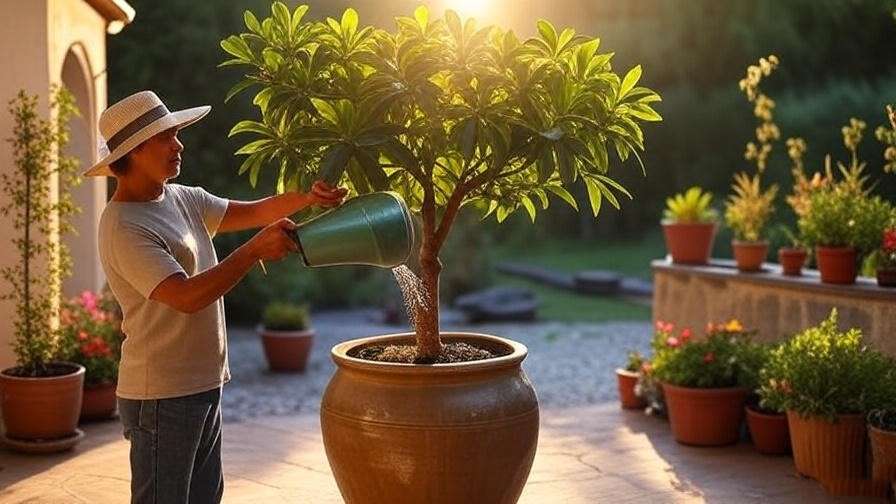
9. Seasonal Care Calendar for Kadota Fig Trees 📅
To keep your Kadota fig tree thriving year-round, follow this seasonal care calendar:
- Spring (March–May):
- Fertilize with a balanced NPK fertilizer.
- Prune before new growth begins.
- Inspect for pests and apply preventive treatments like neem oil.
- Summer (June–August):
- Water deeply, especially during heatwaves.
- Monitor for fig beetles and harvest ripe figs promptly.
- Mulch to retain soil moisture.
- Fall (September–November):
- Harvest ripe figs and clean up fallen debris.
- Reduce watering as growth slows.
- Apply a final layer of mulch before winter.
- Winter (December–February):
- Protect trees from frost with burlap or frost cloth in colder zones.
- Prune dormant trees to maintain shape.
- Check container trees for soil moisture if stored indoors.
Resource: Download our free Kadota Fig Care Checklist at [yourwebsite.com/kadota-fig-checklist] for a printable guide to seasonal tasks.
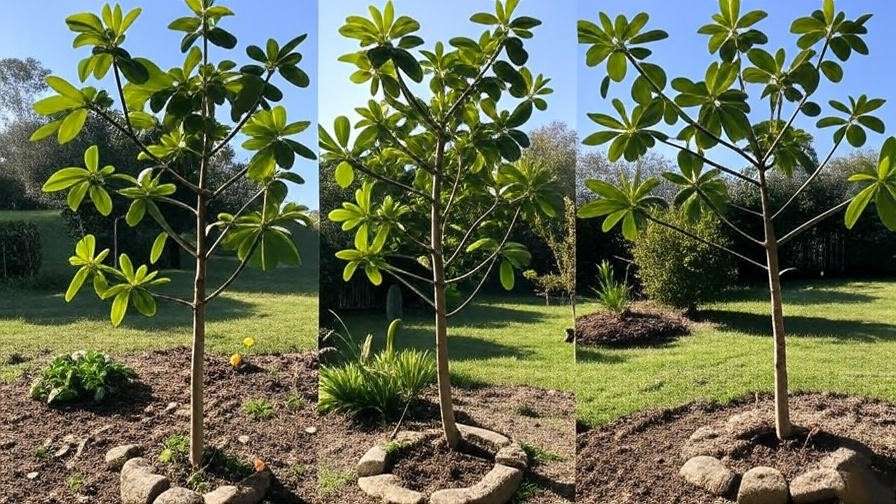
Conclusion
Growing a thriving Kadota fig tree is a rewarding journey that brings delicious, homegrown figs and a touch of Mediterranean charm to your garden. By choosing the right location, providing consistent care, pruning strategically, and addressing pests or problems promptly, you’ll enjoy abundant harvests for years to come. Whether you’re planting in the ground or a container, this guide equips you with expert tips to succeed. Start your Kadota fig tree adventure today and share your progress with #KadotaFigCare on social media! 🌿
FAQs
- How long does it take for a Kadota fig tree to bear fruit?
Kadota fig trees typically produce fruit within 2–3 years of planting, with full production by year 5 under optimal conditions. - Can Kadota fig trees survive winter in colder zones?
In Zones 5–6, grow Kadota figs in containers and move them indoors during winter, or use frost protection like burlap for in-ground trees. - What’s the difference between Kadota and other fig varieties?
Kadota figs are yellowish-green with a mild, sweet flavor, ideal for drying or canning, compared to darker, richer varieties like Black Mission. - How do I propagate a Kadota fig tree?
Propagate via hardwood cuttings in late winter. Take 8–12-inch cuttings, dip in rooting hormone, and plant in a well-draining mix.

